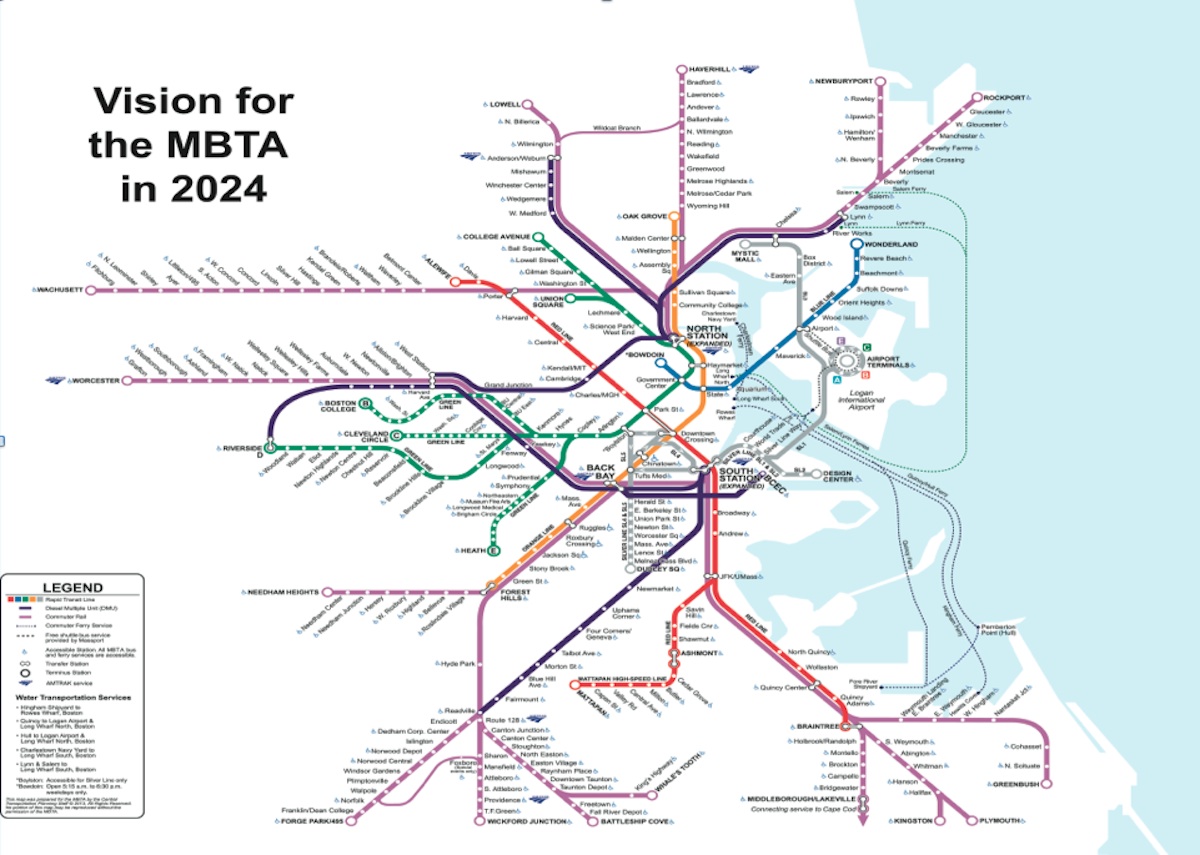beautifulplanet
Lead Service Attendant
- Joined
- Jan 29, 2014
- Messages
- 337
Hello everyone,
being aware of the standard answers that electrification requires an investment, and that even in case the Providence line was supposed to use electric equipment still a mile of new wire to the maintenance yard north of Providence was needed, and that electrification of the Worcester line might be a challenge because of lower bridge clearances and double-stacked freight, still:
- electrification would most likely provide substancial savings on operation costs, even factoring in having to retrain or hire a new maintenance crew for electric service
- electrification would most likely result in faster service, as electric trains and especially EMUs accelerate much faster compared to diesel traction
- electrification would provide a more comfortable ride for the passengers, smoother and quieter
- electrification would result in big environmental benefits, not only on a global level of CO2 emissions, and also on a local level for the human beings around the train lines and in the stations (f.e. Back Bay with the dangerous air quality)
There was the argument that MBTA doesn't wanna do the obvious by starting electric service on the Providence line at least, and keep diesels on the rest of the network, because then it would have to support two propulsion systems. Aside from lots of different rail companies around the world doing exactly that, even in the States in Denver there are new commuter rail lines that will go into service soon, and some of them (the East Corridor to the airport, Gold Line, North Metro Corridor) will be electric, and a different one (Northwest Rail) will be diesel-powered. So why doesn't RTD have any problem supporting two different propulsion systems (at least until Northwest Rail in a very distant future some day could be converted to electric), but MBTA has a problem with that?
On the web, it seems like at least some people are discussion electric traction on MBTA, like here:
https://twitter.com/Boston_to_a_T/status/342456034348130304
and here:
http://www.railroad.net/forums/viewtopic.php?f=65&t=153367&start=45
Still it also heard that there are supposed to be some "program funds" to evaluate the idea of electric locomotives or EMUs on the MBTA. What exactly is meant by that?
How are the chances it is ever going to happen, at least on the Providence line, where Amtrak already uses electric locomotives and trainsets for their service?
I really appreciate replies about this, in case somebody here is well informed regarding this topic.
being aware of the standard answers that electrification requires an investment, and that even in case the Providence line was supposed to use electric equipment still a mile of new wire to the maintenance yard north of Providence was needed, and that electrification of the Worcester line might be a challenge because of lower bridge clearances and double-stacked freight, still:
- electrification would most likely provide substancial savings on operation costs, even factoring in having to retrain or hire a new maintenance crew for electric service
- electrification would most likely result in faster service, as electric trains and especially EMUs accelerate much faster compared to diesel traction
- electrification would provide a more comfortable ride for the passengers, smoother and quieter
- electrification would result in big environmental benefits, not only on a global level of CO2 emissions, and also on a local level for the human beings around the train lines and in the stations (f.e. Back Bay with the dangerous air quality)
There was the argument that MBTA doesn't wanna do the obvious by starting electric service on the Providence line at least, and keep diesels on the rest of the network, because then it would have to support two propulsion systems. Aside from lots of different rail companies around the world doing exactly that, even in the States in Denver there are new commuter rail lines that will go into service soon, and some of them (the East Corridor to the airport, Gold Line, North Metro Corridor) will be electric, and a different one (Northwest Rail) will be diesel-powered. So why doesn't RTD have any problem supporting two different propulsion systems (at least until Northwest Rail in a very distant future some day could be converted to electric), but MBTA has a problem with that?
On the web, it seems like at least some people are discussion electric traction on MBTA, like here:
https://twitter.com/Boston_to_a_T/status/342456034348130304
and here:
http://www.railroad.net/forums/viewtopic.php?f=65&t=153367&start=45
Still it also heard that there are supposed to be some "program funds" to evaluate the idea of electric locomotives or EMUs on the MBTA. What exactly is meant by that?
How are the chances it is ever going to happen, at least on the Providence line, where Amtrak already uses electric locomotives and trainsets for their service?
I really appreciate replies about this, in case somebody here is well informed regarding this topic.




